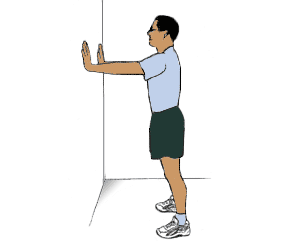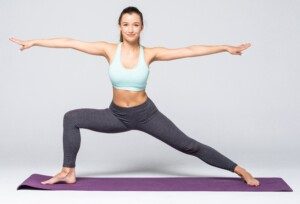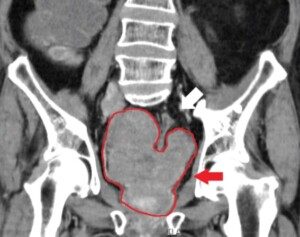
If you’re inactive then just five minutes a day of “negative training” can give you great health benefits.
Negative training, also called “eccentric training” (pronounced ee-sentric), is when the lowering or releasing phase of a resistance exercise is slowed down.
During the negative phase of a resistance or strength exercise, the muscles are elongated.
During this elongation they are still under tension, and it’s this prolonged tension that can yield health benefits even for sedentary people.
Research Says So
Research from Edith Cowan University (ECU) suggests that just five minutes of eccentric training on a daily basis can lead to significant health benefits for inactive people or those who feel “too lazy” to work out.
The study, led by Dr. Benjamin Kirk and Professor Ken Nosaka in ECU’s School of Medical and Health Sciences, examined the effects of a short, home-based exercise program on physical fitness, body composition, and mental and physical well-being in sedentary people.
The Results: Negative Training Benefits Even Sedentary People
Over the course of four weeks, participants completed daily exercises that included 10 repetitions of chair squats, chair reclines, wall pushups and heel drops, all focusing on eccentric (elongated) muscle contractions.
A slowed negative involves gradually lengthening the muscles while they continue contracting against the resistance.
To understand this in an easy way, imagine slowly sitting down in a chair without your hands touching anything for support.
Your upper leg muscles are contracting against the resistance of your body weight.
The results of the study showed significant improvements in muscle strength, flexibility, endurance and even mental health.
This study squashes the myth that in order for exercise to be beneficial, one must invest a lot of time.
This isn’t to say that you should, on a forever basis, limit your resistance exercise to only five minutes a day.
But for sedentary people who find it difficult to stick to exercise, but who wish they could reap some fitness gains, this five-minute daily regimen is a remarkable launching pad that can lead to spending more time committing to strength workouts.
Eccentric exercises are especially beneficial because they can be done at home with your body’s weight.
Physical inactivity is linked to numerous health issues, including heart disease, type 2 diabetes, weak muscles and joints, a weak back prone to chronic pain, and mental health disorders.
Research from the World Health Organization says that an inactive lifestyle contributes to approximately 3.2 million deaths globally each year.
While the study showed that five minutes of negative training every day can offer marked benefits, increasing the amount of exercise over time will lead to even greater improvements.
Again, don’t just stop at five minutes/day just because this is enough to yield benefits.
The WHO’s recommended 150 minutes of exercise per week may seem daunting to sedentary people.
But how about 35 minutes a week to start? That sounds doable!
And in that five minutes, every muscle contraction counts, and completing at least 10 repetitions of each exercise is what you need to do.
Here are four eccentric training exercises that are suitable for beginners.
Squat: With and Without Chair

Chair squat. brusblaus/CC
- Without a chair: Stand with your feet shoulder-width or wider apart.
- Slowly lower your body into a squat by bending your knees, keeping your chest up and back as straight as possible with an arch in the lower part.
- Take about 3-5 seconds to lower so that your thighs are parallel to the floor.
- Once you reach the bottom, return to the starting position quickly.
- Focus on controlled descent for maximum benefit.
- Do the same for the chair version and don’t touch the chair with your hands; don’t let the back of your lower legs touch, either.
Pushup: Wall, Countertop, Floor

Pushup
- Start with your hands (arms mostly straight) slightly wider than shoulder-width apart on a wall.
- Release yourself towards the wall slowly, taking 3-5 seconds to get as close as possible.
- Keep your body in a straight line; avoid sticking your butt out.
- Once you’re close to the wall, push back out to the starting position at normal speed.
- Countertop version: Do everything the same.
- Pushups on the floor can be done with your knees on the floor.
- Do NOT try standard pushups; a sedentary person will not be able to do these. An attempt may result in a strained shoulder tendon.
Lunge

Front lunge
- Step forward with one leg into a lunge position.
- Slowly lower your back knee toward the floor, taking 3-5 seconds.
- Keep your front knee aligned with your foot and your back straight or vertical; don’t lean forward.
- Once you reach the lowest point, push back up quickly to the starting position.
- See a variation of the lunge below; the side lunge has all the same guidelines.

Side lunge. Freepik/diana.grytsku
Heel Drop
- Stand with the balls of your feet on the edge of a step or raised surface.
- Slowly lower your heels down below the level of the step, taking about 3-5 seconds.
- Once you reach the lowest point, rise back up to the starting position quickly, using both legs.
Negative training is a very thoroughly researched form of application to strength workouts.
People who are seasoned at the gym can be seen employing eccentric lowering or releases.
Eccentric training is most commonly seen with the following exercises: dumbbell squat, leg press, leg extension, leg curl, pull-down, seated row, T-bar row, bent-over dumbbell row, shoulder press, chest press, biceps curl and less commonly, dipping motions and the back squat.
 Lorra Garrick is a former personal trainer certified by the American Council on Exercise. At Bally Total Fitness, where she was also a group fitness instructor, she trained clients of all ages and abilities for fat loss and maintaining it, muscle and strength building, fitness, and improved cardiovascular and overall health.
Lorra Garrick is a former personal trainer certified by the American Council on Exercise. At Bally Total Fitness, where she was also a group fitness instructor, she trained clients of all ages and abilities for fat loss and maintaining it, muscle and strength building, fitness, and improved cardiovascular and overall health.
.









































